Bhamchandra Caves ( भामचंद्र लेणी )
When you think of Pune, what comes to mind? The bustling city life, the mouth-watering misal pav, or maybe the serene hills surrounding it? But did you know Pune is also a land of saints and sacred temples? It’s like the spiritual Disneyland of Maharashtra! Among the many saints who have blessed this region, one name stands out—Saint Tukaram Maharaj. Born in Dehu, near Pune, he’s a legend whose teachings and devotional poetry (abhangas) continue to inspire millions.
Now, when we talk about Saint Tukaram Maharaj, two places instantly pop up—Dehu, his birthplace, and Bhandara Dongar, where he spent a lot of time. But wait, there’s a hidden gem that often gets overlooked—a mystical hill where he meditated, wrote abhangas, and even had a divine vision of Lord Vitthala after 15 days of intense meditation.
So, are you ready to explore this lesser-known spiritual treasure? Let’s dive in and uncover the magic of this sacred hill. And who knows? You might just find yourself planning a trip there faster than you can say, “Vitthala, Vitthala!”
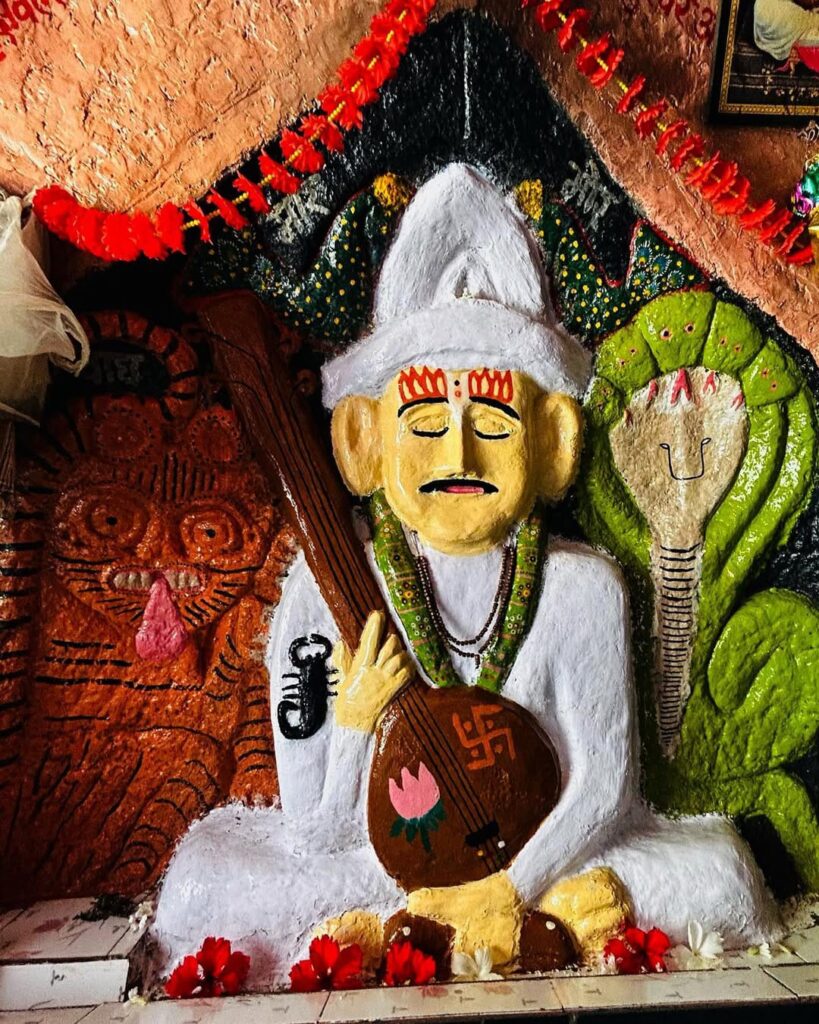
History of Bhamchandra Caves
Nestled in the Sahyadri range, just 50 km from Pune, the Bhamchandra Caves are a magical mix of history, nature, and spirituality. These caves hold deep significance for followers of the Varkari sect because they are linked to the 17th-century Saint Tukaram Maharaj. According to legend, Saint Tukaram Maharaj meditated here for 15 days, facing all sorts of challenges—snakes, scorpions, and even tigers! But his devotion was so strong that he had a divine vision of Lord Vitthal, a moment he later described in his powerful Abhanga:
पंधरा दिसामाजी साक्षात्कार झाला !
विठोबा भेटला निराकार !!
भांबगिरी पाठारी वस्ती जाण केली !
वृत्ति स्थिरावली परब्रम्ही !!
निर्वाण जाणोनी आसन घातिले !
ज्ञान आरंभिले देवाजीचे !!
सर्प, विंचू, व्याघ्र अंगासी झोंबिले!
पिडू जे लागले सकळीक !!
दिपकी कर्पूर कैसा तो विराला!
त्तैसा देह झाला तुका म्हणे !!
English Meaning:
“For fifteen days, I had a divine vision!
Vitthoba appeared before me in his formless state.
I settled in the Bhamchandra caves, letting my mind rest in the Supreme.
Realizing liberation, I sat in deep meditation,
awakening the divine knowledge within me.
Snakes, scorpions, and tigers surrounded me,
but none of their attacks could shake me.
Like camphor burning into pure light,
my body too dissolved into divine bliss,” says Tukaram Maharaj.
This vision transformed Tukaram Maharaj’s life, deepening his devotion and inspiring the many Abhangas that continue to guide and uplift his followers today. The very energy of this sacred experience still lingers in these caves, making them a must-visit for spiritual seekers and history lovers alike.
The caves are a cool mix of natural rock formations and ancient carvings. The main attraction is the Bhamchandra Mahadev Temple, a small temple carved into the rock, dedicated to Lord Shiva. Nearby, there’s a stone water tank that’s been around for centuries—imagine how people back then managed to carve something so precise without modern tools! As you explore, you’ll also find a small Bhagirathi Kund, a peaceful spot that’s perfect for some quiet time. The caves are still home to poojaris (priests) who live here and take care of the place. One of the most exciting things to see is the stone idol of Saint Tukaram Maharaj, sitting in a meditative pose, along with idols of Vitthal and Rukmai, his beloved deities. And if you climb a little higher, you’ll be rewarded with amazing views of the surrounding valleys—it’s like nature’s way of saying, “Good job, you made it!”
The Journey Begins: Pune to Bhamchandra Caves
It all started on Holi day, the one day when people turn into walking rainbows, and colors fly around like party decorations. As everyone around me was busy playing Holi, I sat at home, wondering what to do with my holiday. The travel bug inside me started acting up, and suddenly, the idea of an adventure seemed way more exciting than getting smacked with water balloons all day.
Since it was a festival day, I wanted to visit a place that was not just scenic but also peaceful and sacred (you know, balance out all the Holi madness with some spirituality). A little Google searching later, I found Bhamchandra Hill—a hidden gem connected to Sant Tukaram Maharaj.
Without wasting a second, I called my travel buddy, Sachin, to join me. He agreed instantly, probably assuming I was taking him on a food trail (poor guy had no idea he was about to get a free cardio session instead!). Surprise, Sachin!
With the help of Google Maps, we set off from Pune, cruising through Shivaji Nagar, Pimpri-Chinchwad, Talwade MIDC, and Chakan. Thanks to Holi, the usually packed roads were surprisingly empty, so we made good time. But the summer sun? Oh, it made sure we knew who was boss! The heat was already in full swing, making us question our life choices.
After about an hour of riding, we finally reached the Bhamchandra Caves parking area.

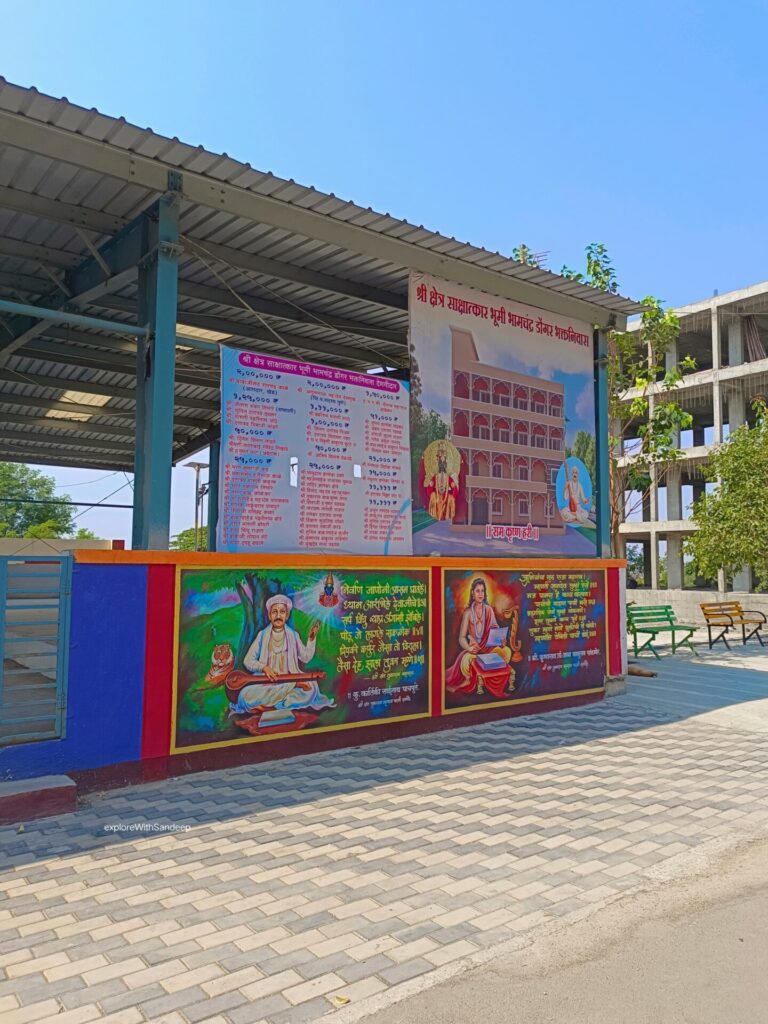

And guess what? The sacred vibes hit us the moment we stepped off the bike. The walls were covered with beautiful paintings showing scenes from Tukaram Maharaj’s life, almost as if they were welcoming us to the journey ahead. Looking around, we knew this place wasn’t just another trekking spot—it was something truly special.
The Trek Begins: Testing Our Limits

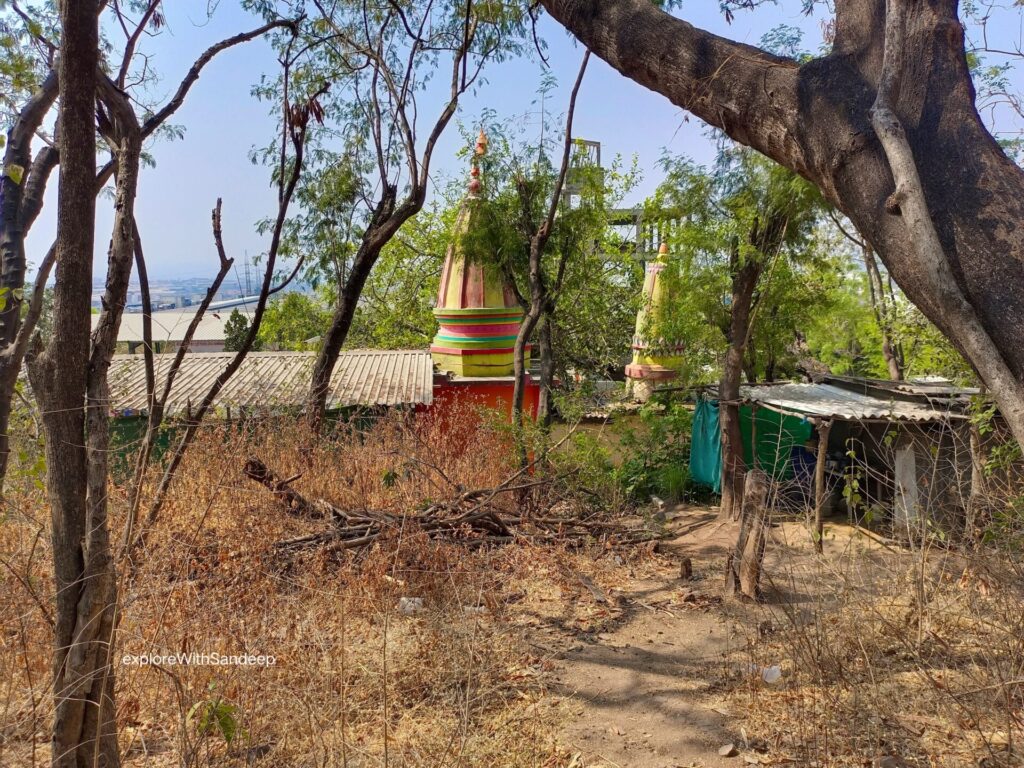

With excitement bubbling, we parked our bikes and started the trek. The first stop? A Maruti temple at the base of the hill. We took Lord Hanuman’s blessings and noticed an old Pujari (priest) sitting nearby, reading Dnyaneshwari. What made this moment even more surreal? He was over 110 years old! If that’s not pure devotion, I don’t know what is.
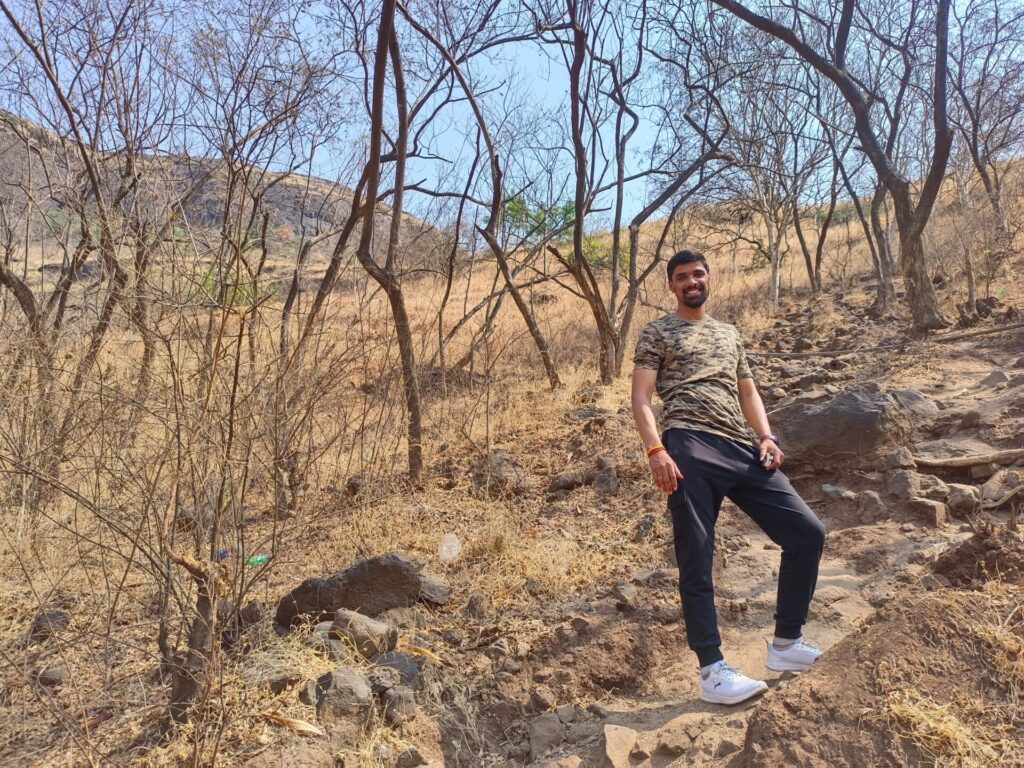

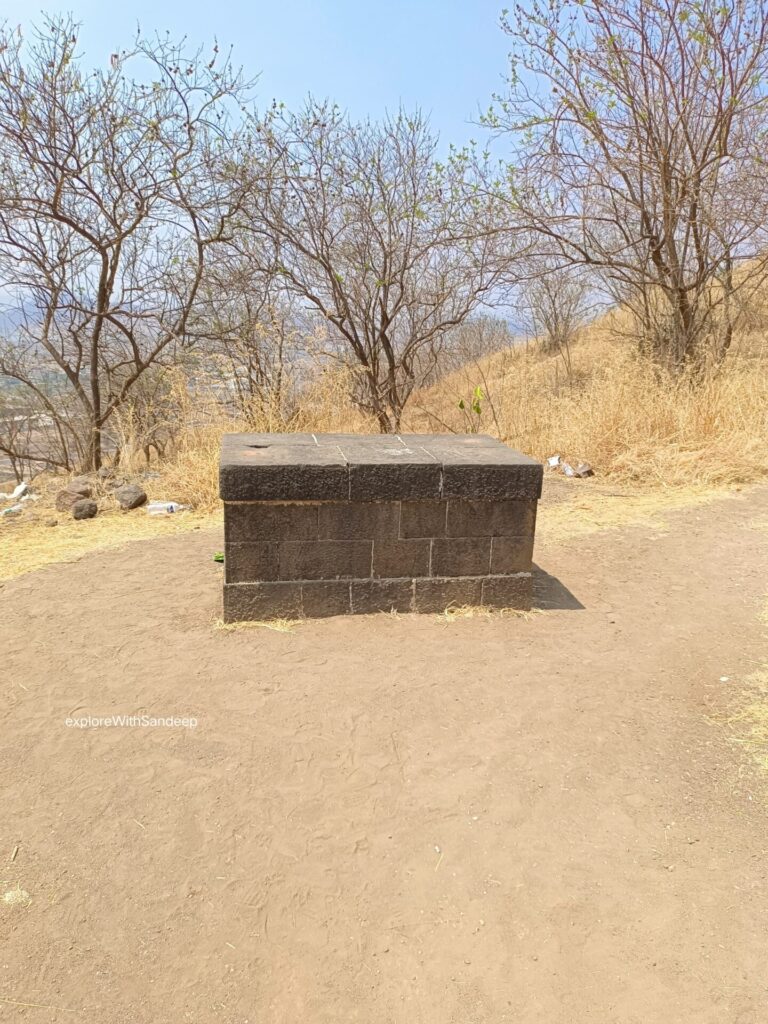
The trek, which we thought would be a walk in the park, turned out to be a full-blown heat endurance test. The sun was on a mission to roast us, and to make things worse, the trees had decided to take the summer off, leaving us with zero shade. And guess what? We forgot to bring water bottles—because clearly, we love making things harder for ourselves! 😅
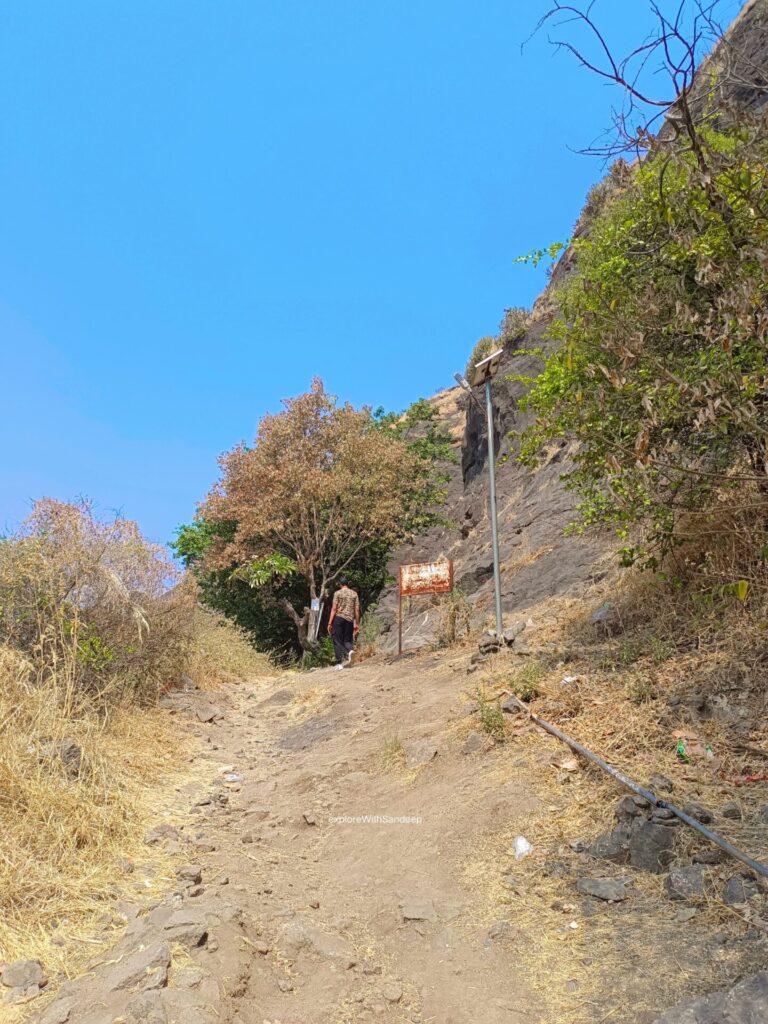
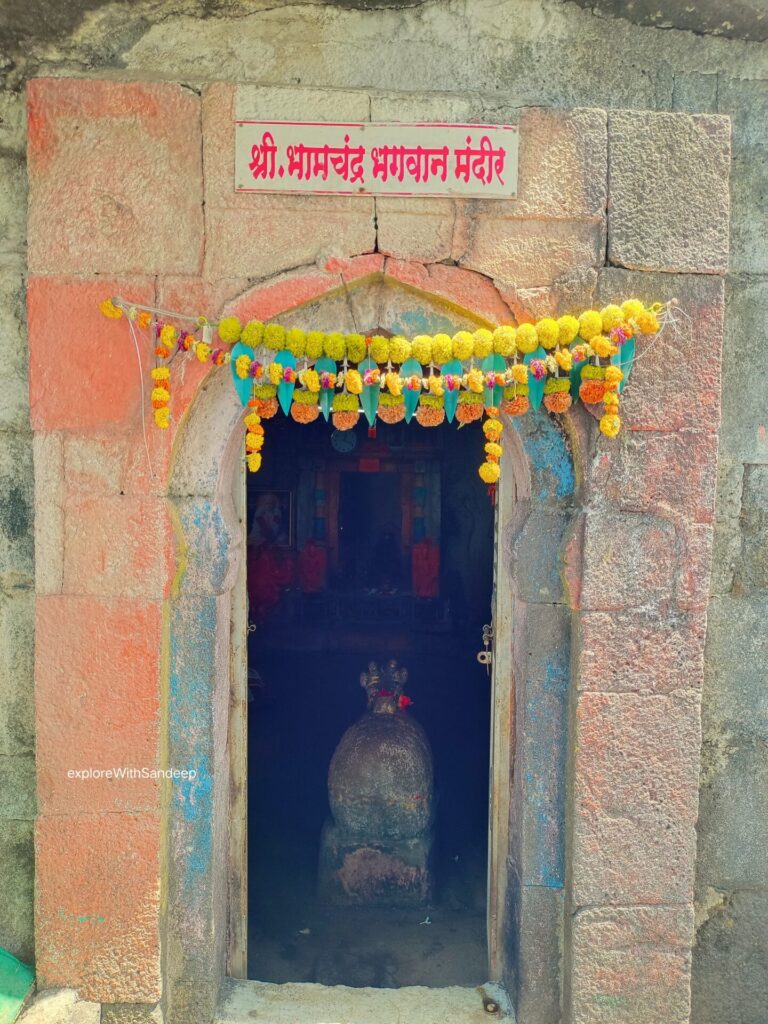
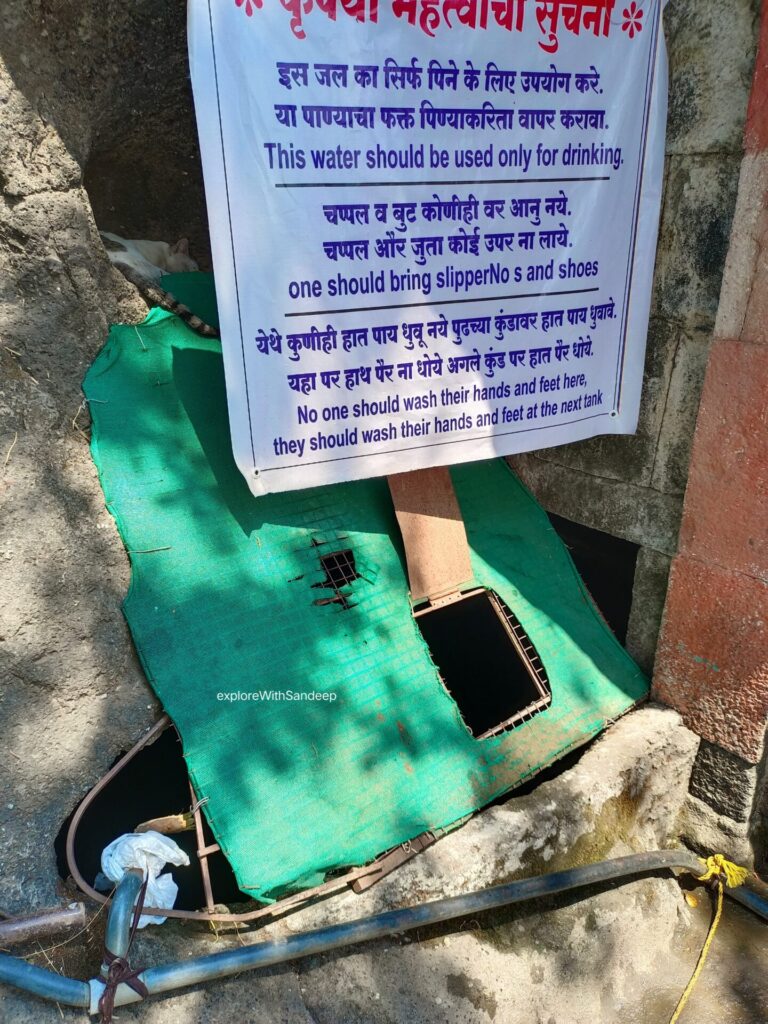
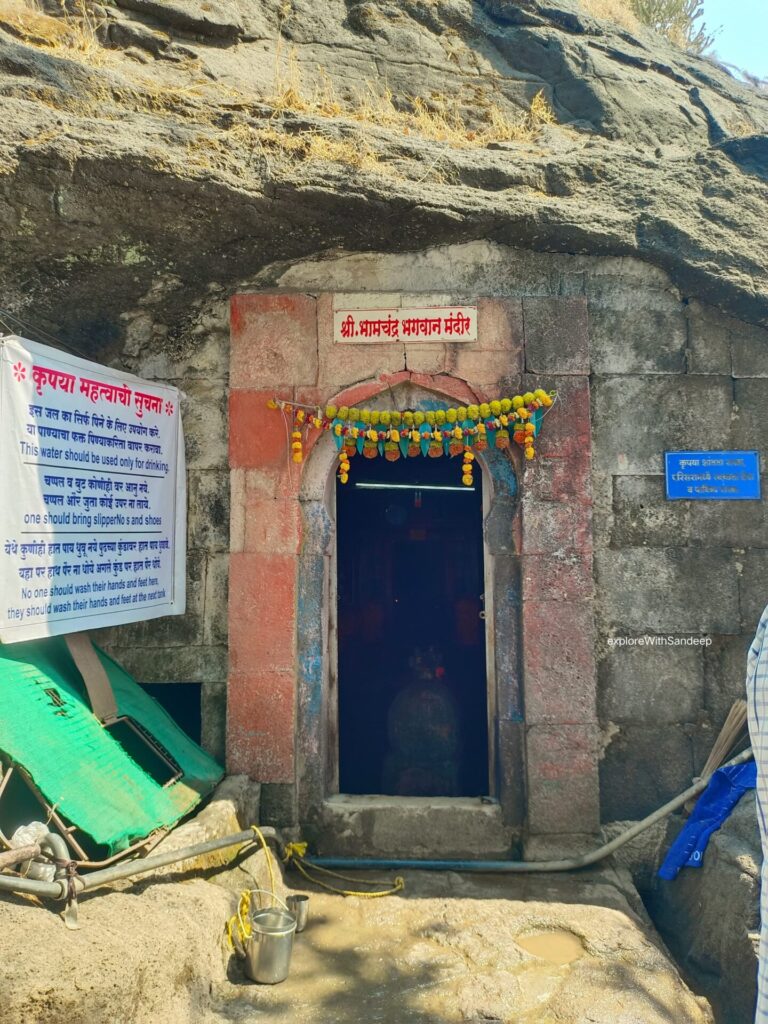
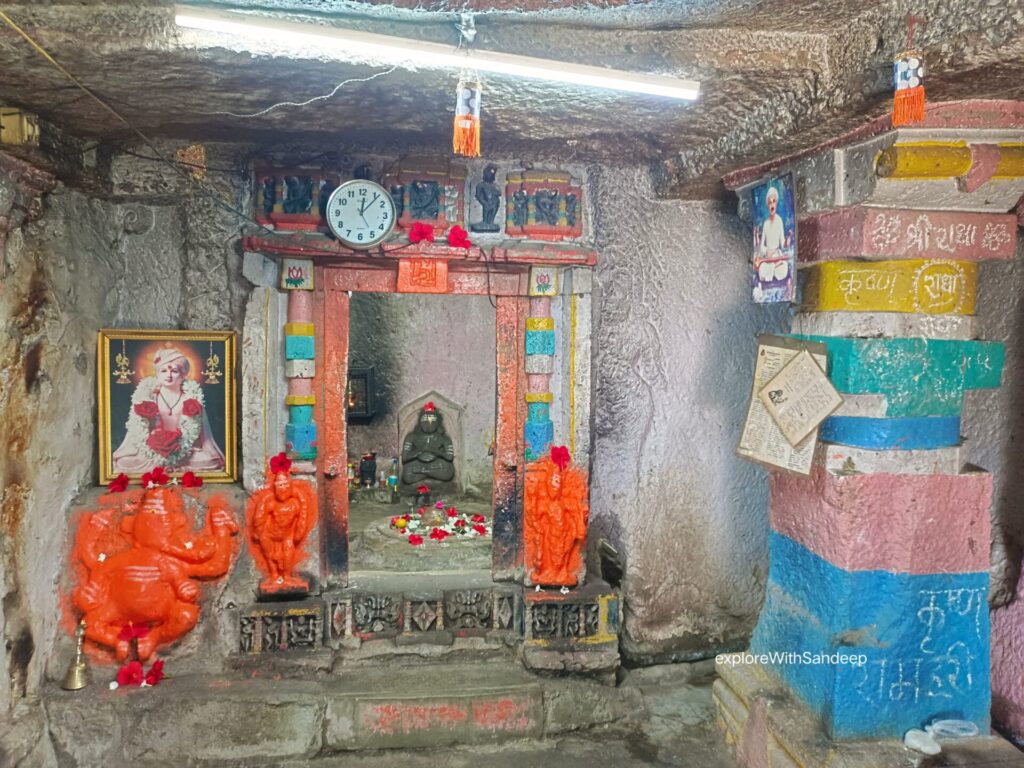
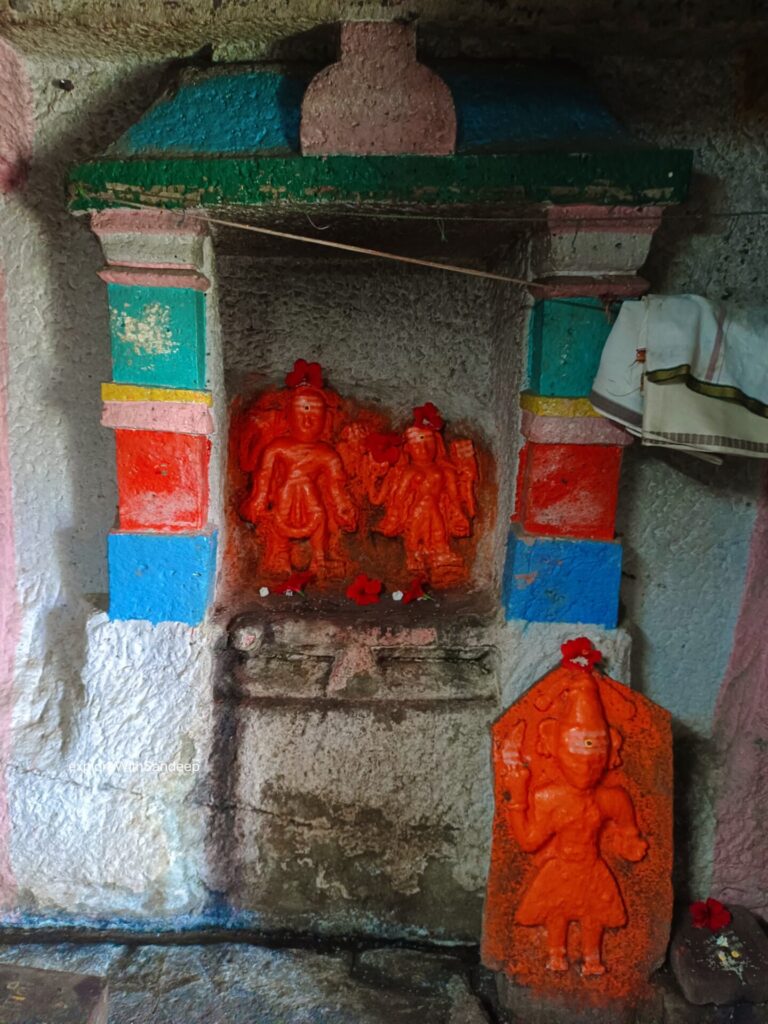
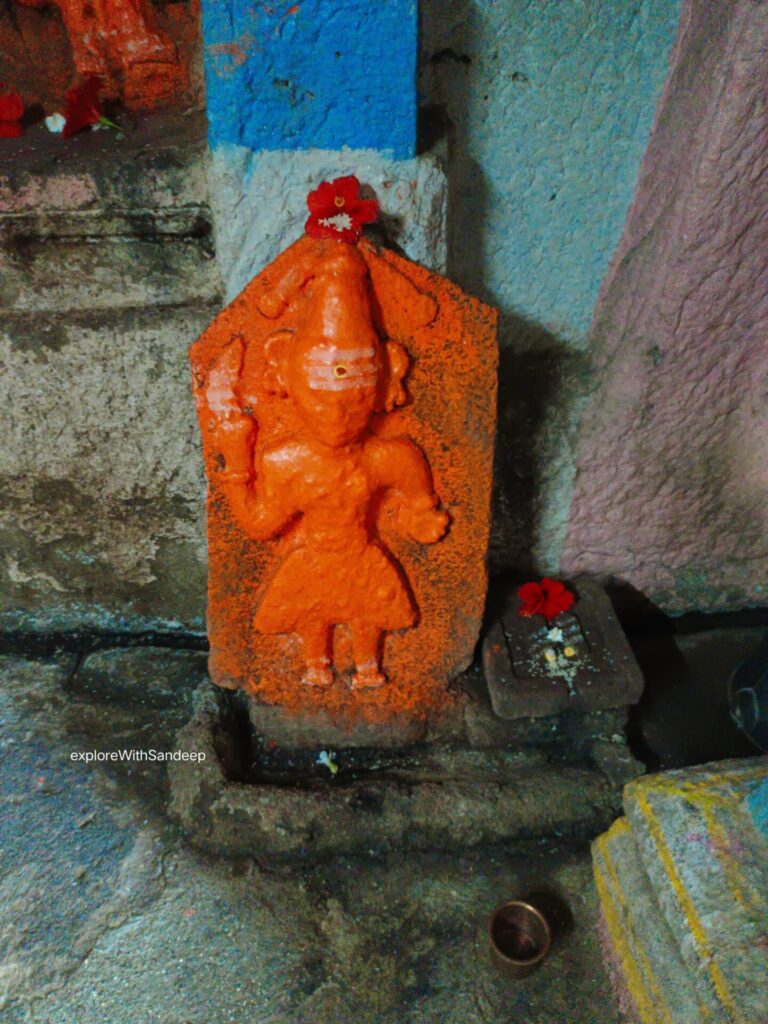
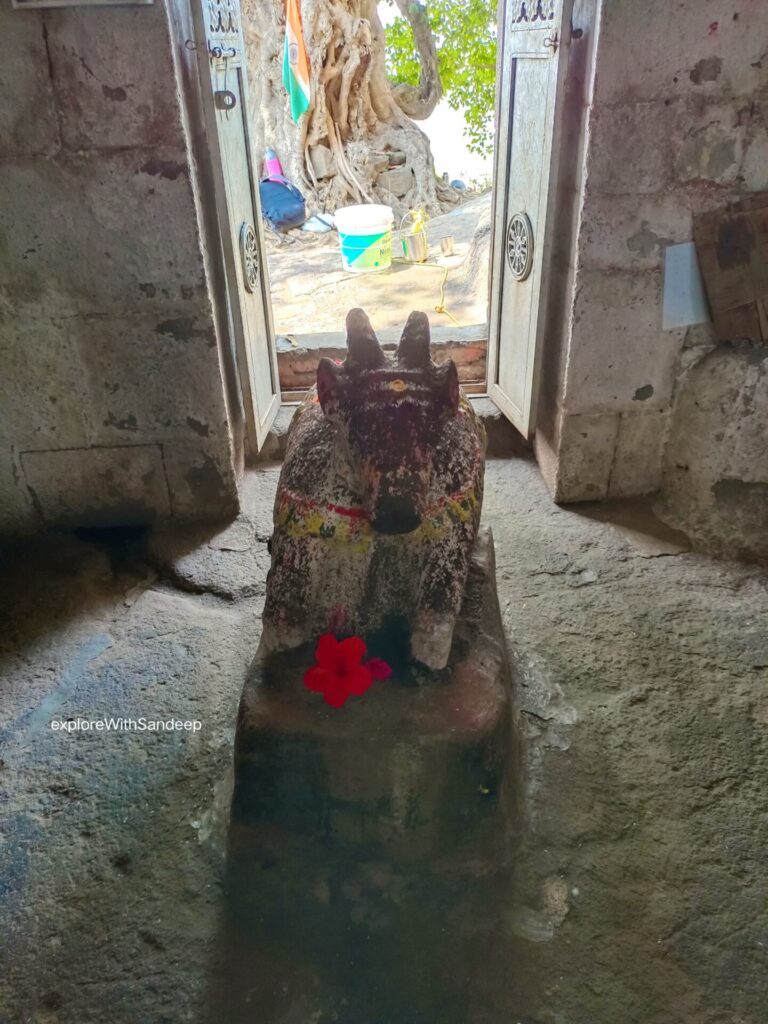
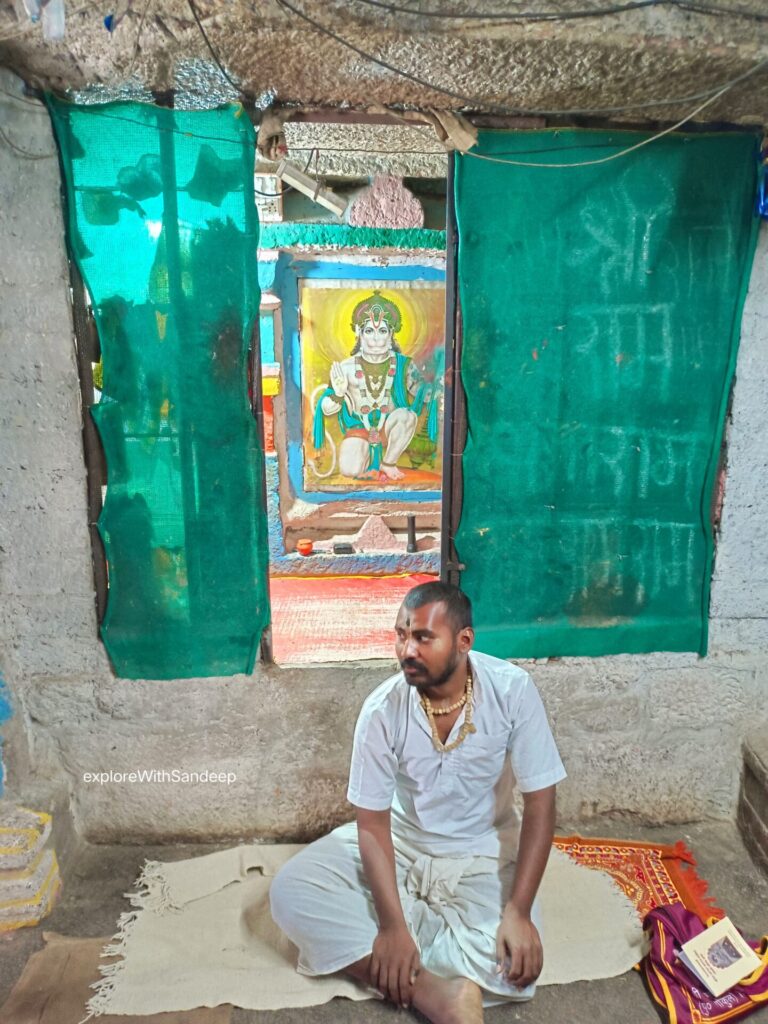

Inside, we were greeted by a Nandi idol facing Lord Shiva. The cave was small but had a powerful aura, housing Kalbhairavnath, Jogeshwari Mata, and Tajai Devi (the gram daivat of Vasoli village). We met a meditating priest, who shared the history of this place and how 17 priests live here, sustaining themselves through food donations from Kashinath Kaka Bhondwe, a devotee from Ravet. Listening to these stories made us feel incredibly blessed to visit such a sacred place.
Before leaving, we took blessings from the Pujari, who greeted us with a serene “Ram krishna Hari.”
Mystical Bhamchandra Caves: Where Saint Tukaram Met the Divine




We continued our exploration and soon reached the largest cave on the hill. This cave serves as a residence for the priests. Some were cooking, some were meditating, and some were reading sacred texts—the entire place radiated spirituality. After capturing some pictures, we headed towards the cave where Sant Tukaram Maharaj had a vision of Lord Vitthal.
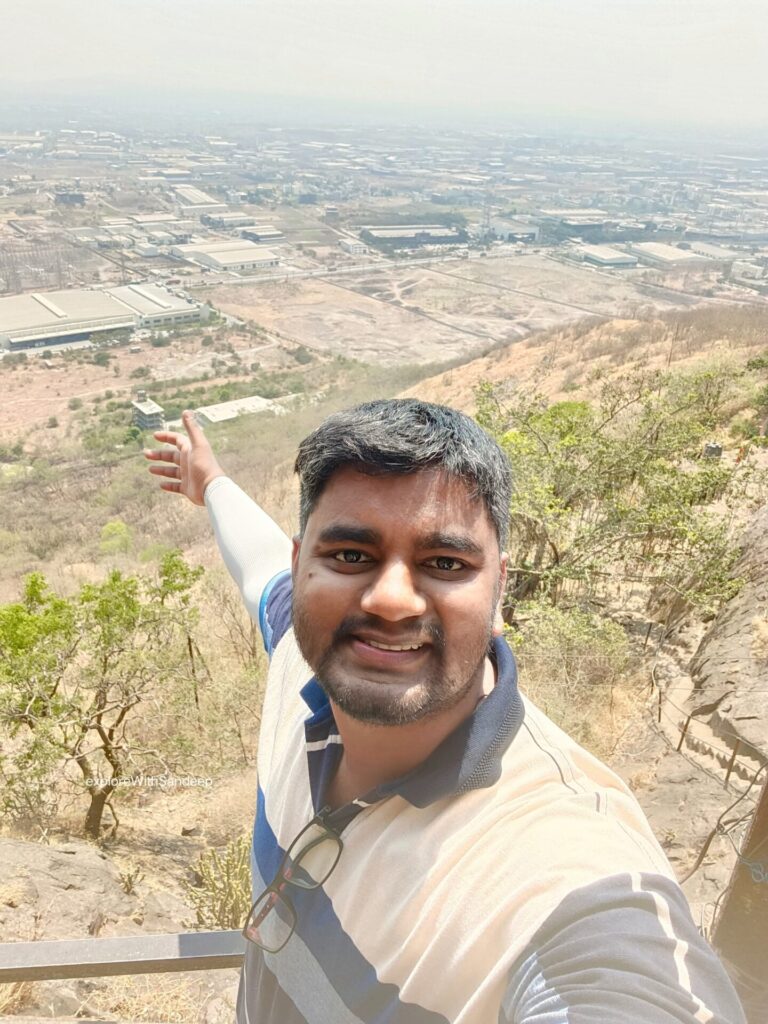
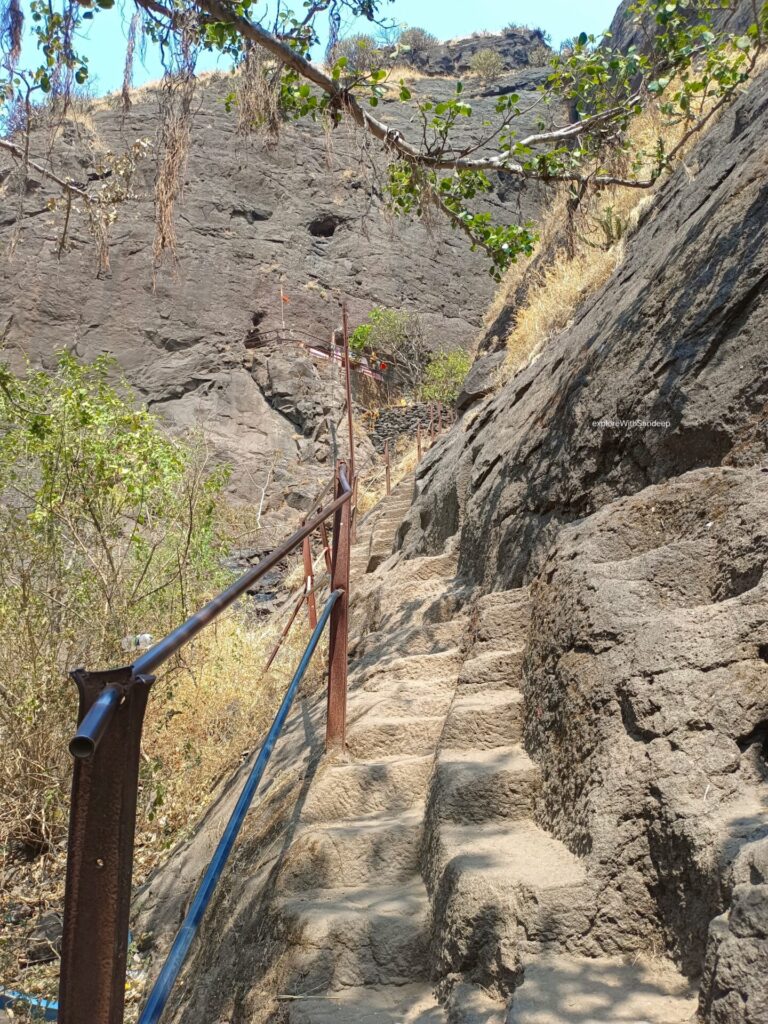

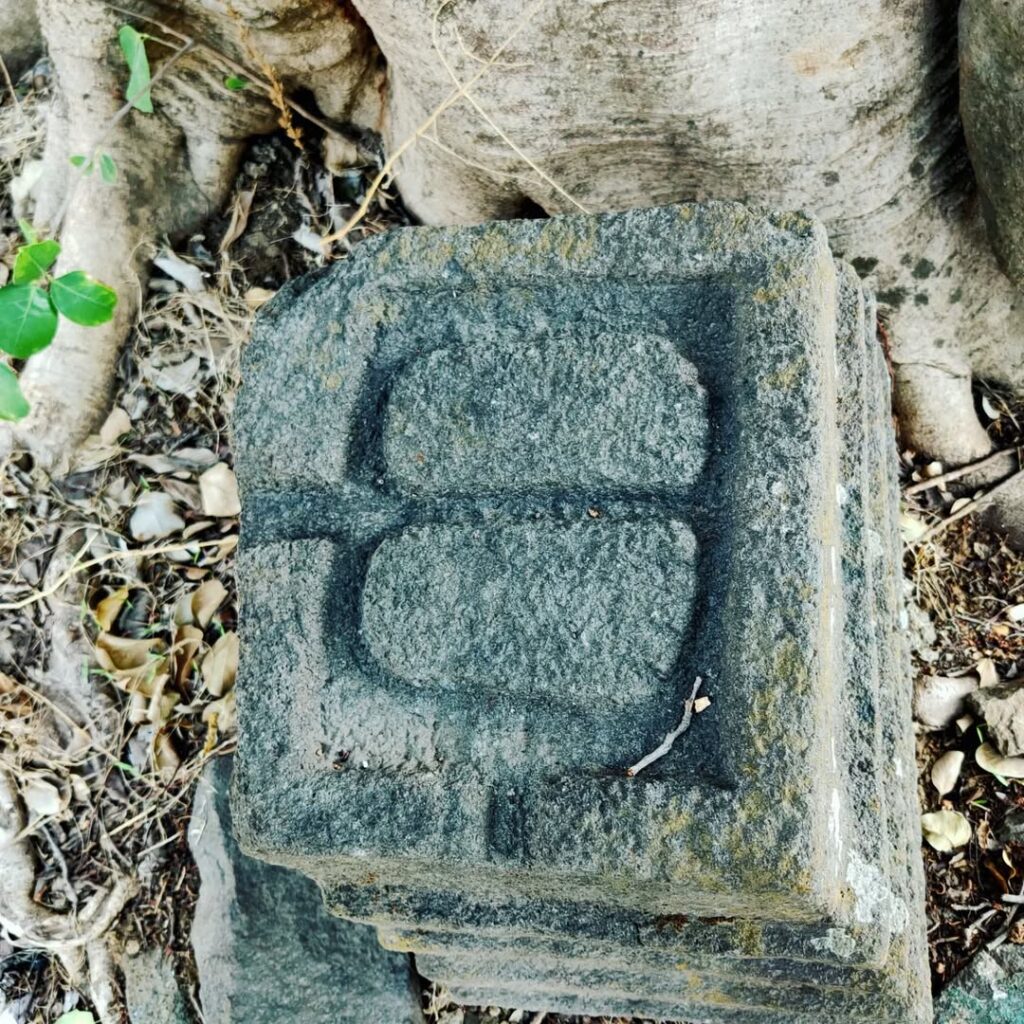

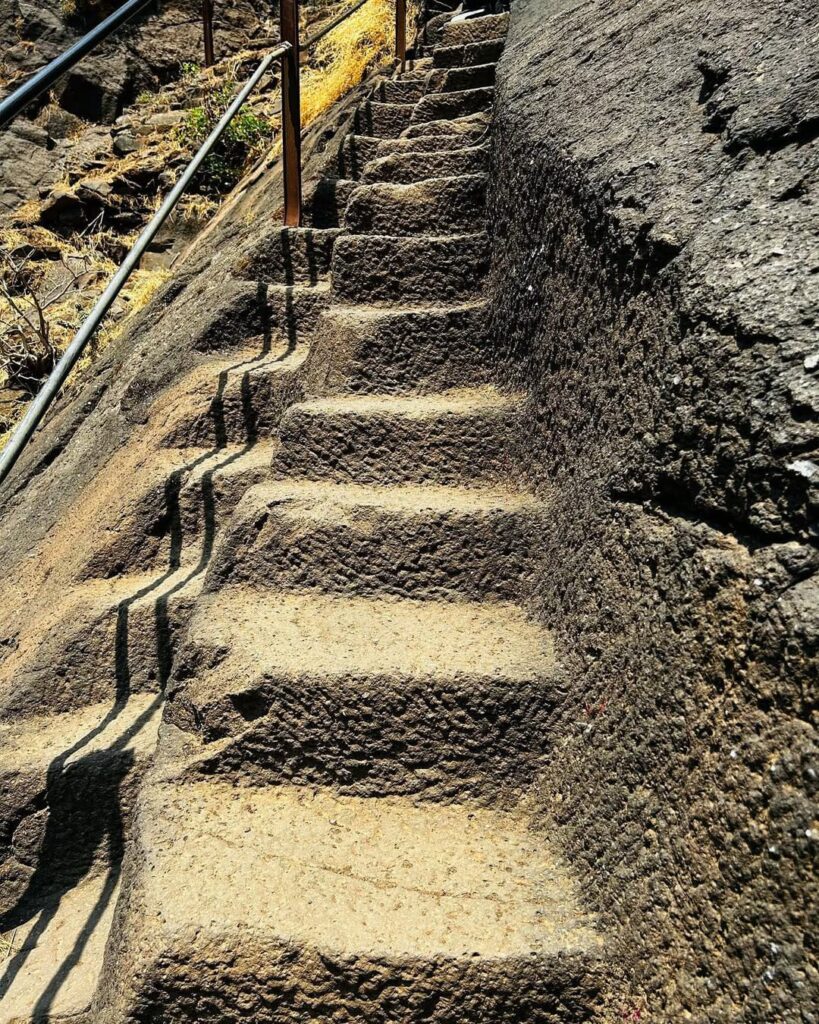


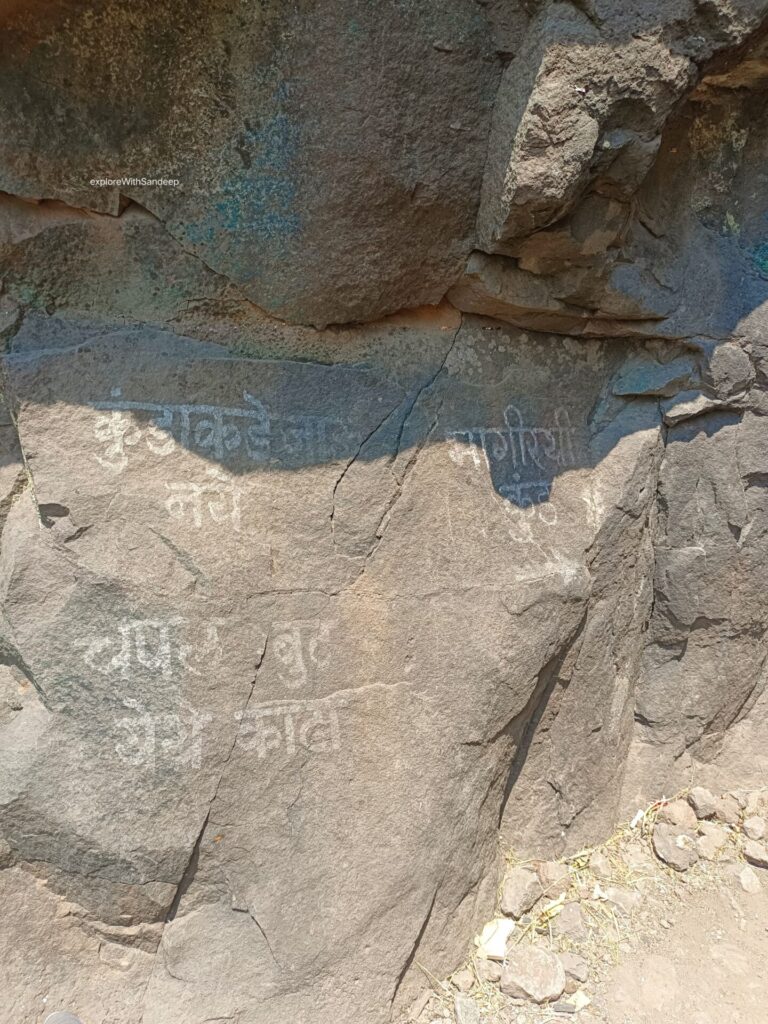
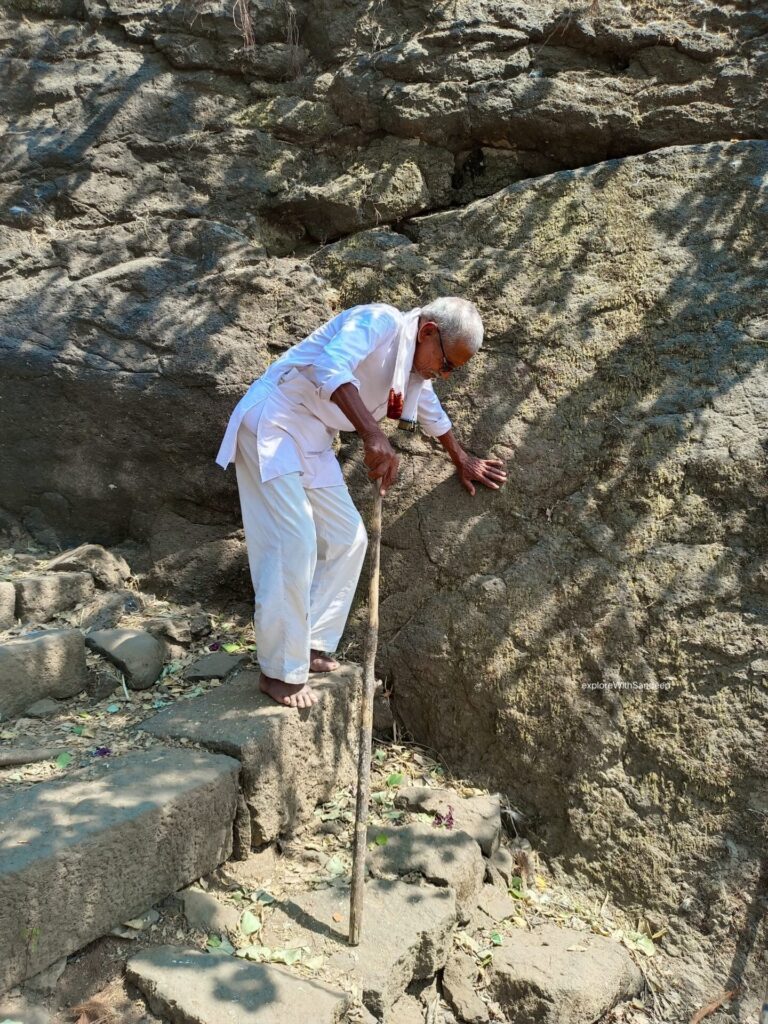
This part of the trek was a real leg burner—with over 60 stone-carved steps leading to the main temple and Bhagirathi Kund (a sacred water reservoir). With a few more steps, we finally arrived at the Tukaram Maharaj temple, and suddenly, the outside heat didn’t matter anymore. Inside the temple, the air was cool and peaceful.

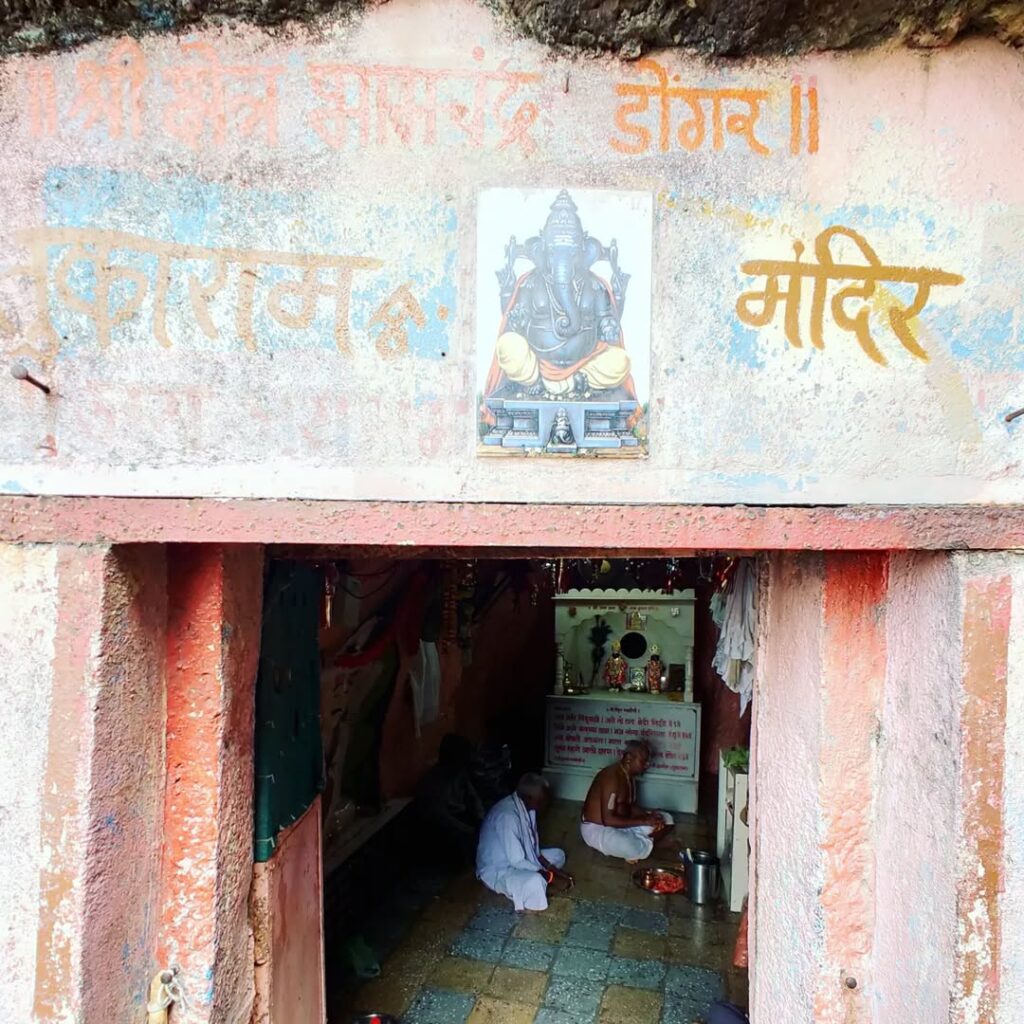

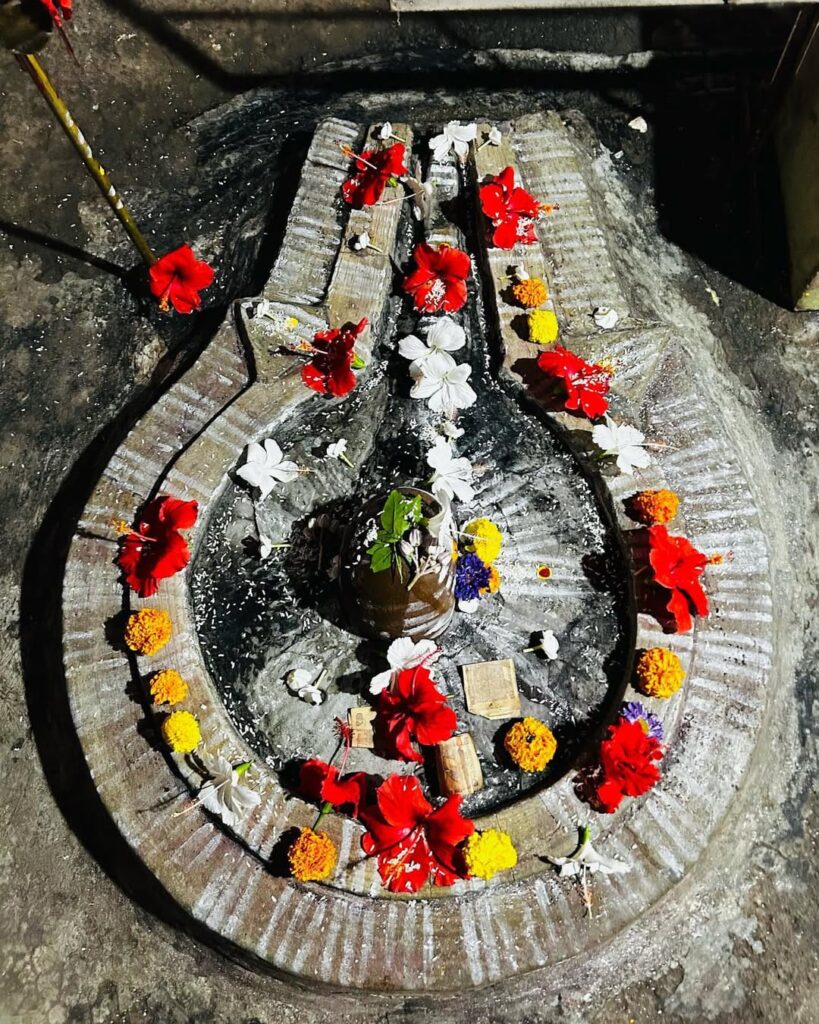


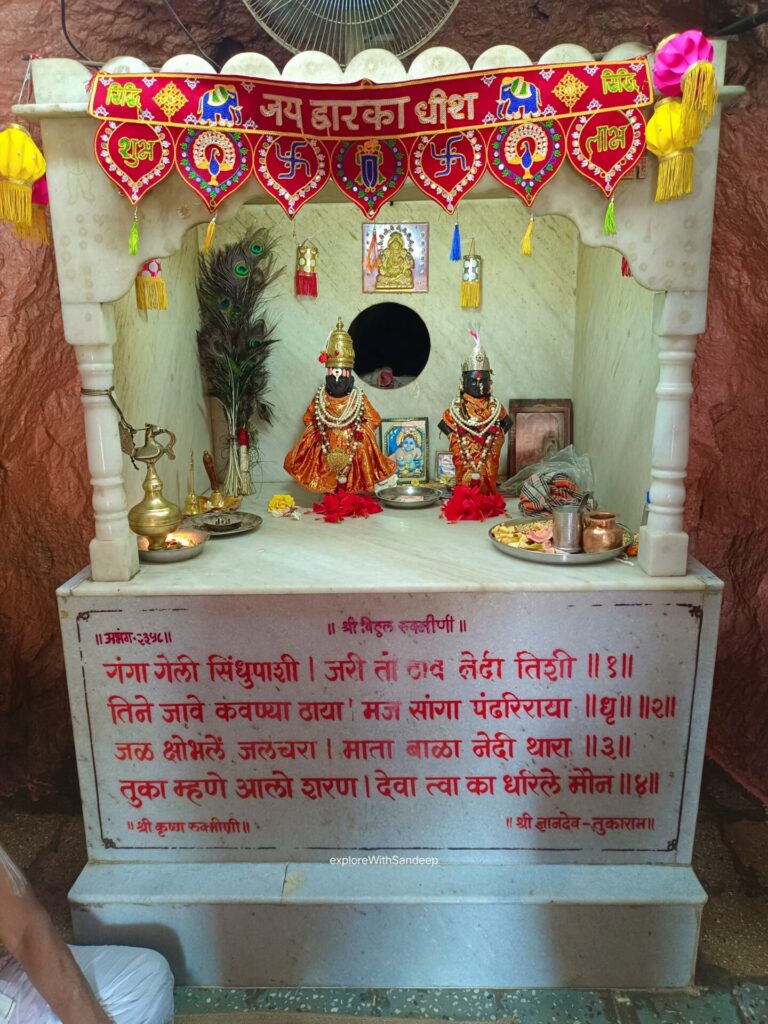
A beautiful stone-carved idol of Sant Tukaram Maharaj sat in a meditative posture, Veena in hand. Next to him were idols of Lord Vitthal and Goddess Rukmini, radiating divine energy. I sat there, lost in the moment, absorbing the tranquility. No phones, no distractions—just pure spiritual bliss.
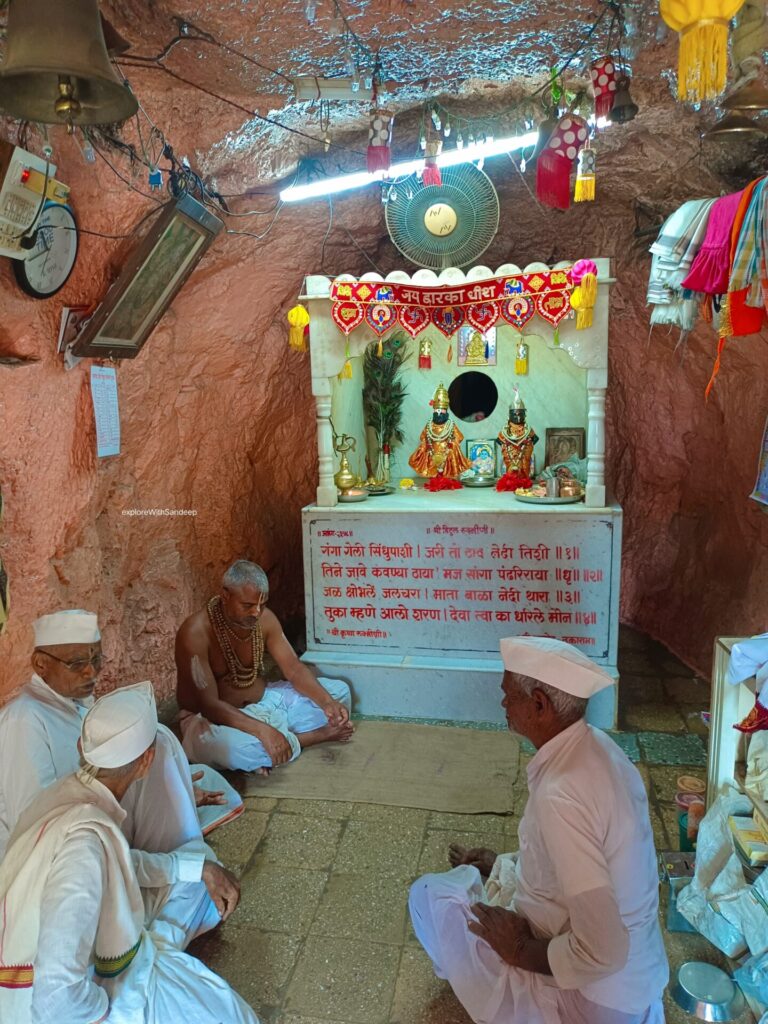
Here, we met Vishwanath Baba, also known as Gatha Murti. This man is a legend! He has been the main priest of Bhamchandra Caves for 40 years, and get this—he spent 20 years in complete silence, only chanting Sant Tukaram Maharaj’s Abhangas. Even more fascinating? He never eats cooked food, surviving on sprouted grains, fruits, and raw vegetables. The glow on his face was undeniable—proof that spirituality truly nourishes the soul.
This meeting was a wake-up call. We chase money, success, and material possessions, but true peace comes from within. Sometimes, all we need is a moment of silence, a deep breath, and a connection to something greater than ourselves.
The Descent and Reflection
After spending some time meditating and soaking in the divine vibes, it was time to head back. But before starting our descent, we refilled our energy with some fresh water from the temple’s tank and took a few more moments to appreciate the serenity of this place.
On the way down, we met two priests, exchanged greetings, and bid farewell. Our journey had come full circle, but the peace and spirituality we experienced at Bhamchandra Caves stayed with us.
As we rode back to Pune, I realized something—
Exploring new places is great, but exploring yourself through these places? That’s life-changing.
Until the next adventure, Ram Krishna Hari! 🙏
Things to See at Bhamchandra Caves
1. Bhama Chandra Mahadeva Temple
2. The Monk’s Abode
3. The Meditation Cave
4. Tukaram Maharaj’s Cave
5. Stone-Carved Water Tank
6. Bhagirathi Kund (Sacred Water Reservoir)
7. Ancient Rock-Cut Steps
8. Panoramic Viewpoint of the Surrounding Hills
9. Maruti Temple
Places to Explore Near Bhamchandra Caves
If you have some extra time, consider visiting:
– Dehu Village: The birthplace of Saint Tukaram, located just 11 km away.
– Lonavala and Khandala: Popular hill stations nearby, perfect for a day trip.
– Chakan Fort: A historic fort with panoramic views of the region.
How to Reach Bhamchandra Caves
– By Road: The caves are easily accessible by car from Pune. Follow the Pune-Shivaji Nagar-Pimpri Chinchwad-Talwade MIDC-Chakan route.
– By Public Transport:Local buses and shared cabs are available from Pune to Chakan. From there, you can hire a taxi or auto-rickshaw to the caves.
Best Time to Visit Bhamchandra Caves
The best time to visit Bhamchandra Caves is during the monsoon (June to September) and winter (October to February) seasons. The monsoons bring lush greenery, cool breezes, and a misty, magical vibe, making the trek scenic and refreshing. Winters offer pleasant weather, perfect for exploring the caves without the discomfort of heat. Summers (March to May) can be quite hot, with little shade along the trek, so if visiting during this time, start early in the morning or late in the evening to avoid the scorching sun.
Bhamchandra Caves: Frequently Asked Questions (FAQs)
1. What are the visiting hours of Bhamchandra Caves?
Bhamchandra Caves are open from 6:00 AM to 7:00 PM. It is recommended to visit early in the morning or before sunset for the best experience.
2. What is the best time to visit Bhamchandra Caves?
The ideal time to visit is October to February when the weather is pleasant. Monsoon (June to September) also offers scenic beauty, but the trail can be slippery. Summers (March to May) can be very hot, so plan an early morning or late evening visit.
3. How can I reach Bhamchandra Caves?
- From Pune: Pune → Pimpri-Chinchwad → Talwade MIDC → Chakan → Wadmukhwadi → Bhamchandra Hill.
- By Road: You can drive or take a cab to the base of the hill, which is accessible via Chakan.
- By Public Transport: Buses and shared autos are available from Pune to Chakan, from where you can hire a private auto or trek to the caves.
4. How long does it take to trek to Bhamchandra Caves?
The trek takes 30 to 45 minutes, depending on your pace and fitness level.
5. Is the trek to Bhamchandra Caves difficult?
It is a moderate trek, with stone-carved steps and a few steep patches. The heat can make it challenging, so carry water and wear proper trekking shoes.
6. What should I carry for the Bhamchandra Caves trek?
- Water (at least 2 liters)
- Snacks or light food
- Comfortable trekking shoes
- Hat/cap and sunglasses (for sun protection)
- Raincoat (during monsoon)
- Fully charged mobile phone
- Flashlight (if trekking early or late)
7. What is the significance of Bhamchandra Caves?
Bhamchandra Caves are known for their spiritual and historical importance. Saint Tukaram Maharaj meditated here for 15 days, where he had a divine vision of Lord Vitthal. The caves house ancient temples of Lord Shiva, Nandi, Kalbhairavnath, Jogeshwari Mata, and Tajai Devi.
8. Is there food available near Bhamchandra Caves?
There are no food stalls or restaurants at the caves, so it’s best to bring your own food and water. You can find local eateries in nearby Chakan or Pimpri-Chinchwad.
9. Are there any accommodation options near Bhamchandra Caves?
There are no accommodations at the caves, but you can stay in nearby Chakan, Pune, or Pimpri-Chinchwad, where hotels and lodges are available.


I thank for the information. I did not know it.
Thanks a lot for reading and sharing your thoughts😊